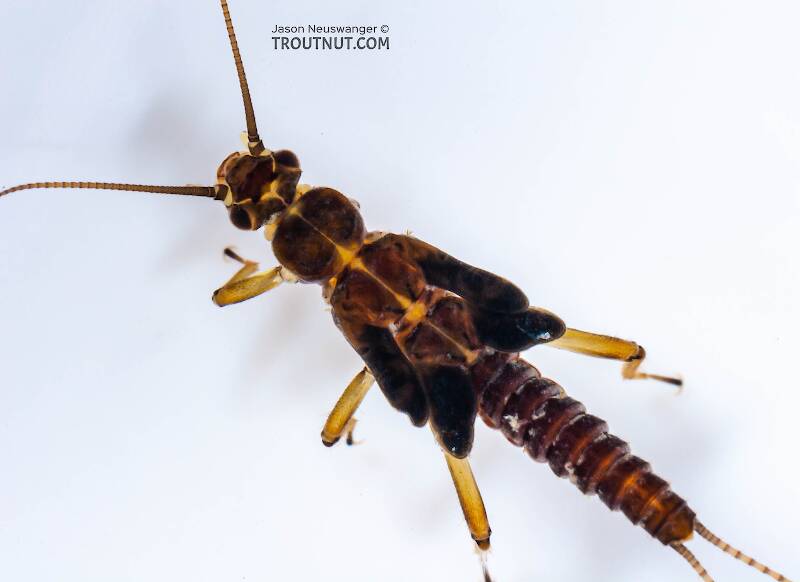
Hex Mayflies
Hexagenia limbata
The famous nocturnal Hex hatch of the Midwest (and a few other lucky locations) stirs to the surface mythically large brown trout that only touch streamers for the rest of the year.
Featured on the forum

This is an interesting one. Following the keys in Merritt R.W., Cummins, K.W., and Berg, M.B. (2019) and Jacobus et al. (2014), it keys clearly to Ephemerella. Jacobus et al provide a key to species, but some of the characteristics are tricky to interpret without illustrations. If I didn't make any mistakes, this one keys to Ephemerella mucronata, which has not previously been reported any closer to here than Montana and Alberta. The main character seems to fit well: "Abdominal terga with prominent, paired, subparallel, spiculate ridges." Several illustrations or descriptions of this holarctic species from the US and Europe seem to match, including the body length, tarsal claws and denticles, labial palp, and gill shapes. These sources include including Richard Allen's original description of this species in North America under the now-defunct name E. moffatae in Allen RK (1977) and the figures in this description of the species in Italy.

Troutnut is a project started in 2003 by salmonid ecologist Jason "Troutnut" Neuswanger to help anglers and
fly tyers unabashedly embrace the entomological side of the sport. Learn more about Troutnut or
support the project for an enhanced experience here.
Acroneuria on Jan 20, 2007January 20th, 2007, 12:47 pm EST
Hard to tell what genus this belongs to; nemourids can be tricky. Capniids are most often confused with Leuctrids--they are very similar.
Water Pollution Biologist
PA Department of Environmental Protection
PA Department of Environmental Protection
Troutnut on Jan 20, 2007January 20th, 2007, 12:51 pm EST
Thanks. What characteristic sets it apart?
Jason Neuswanger, Ph.D.
Troutnut and salmonid ecologist
Troutnut and salmonid ecologist
PeterO
Posts: 8
Posts: 8
PeterO on Apr 26, 2007April 26th, 2007, 10:01 am EDT
This Nemourid looks like Prostoia sp. A common gill-less genus in central NY.



